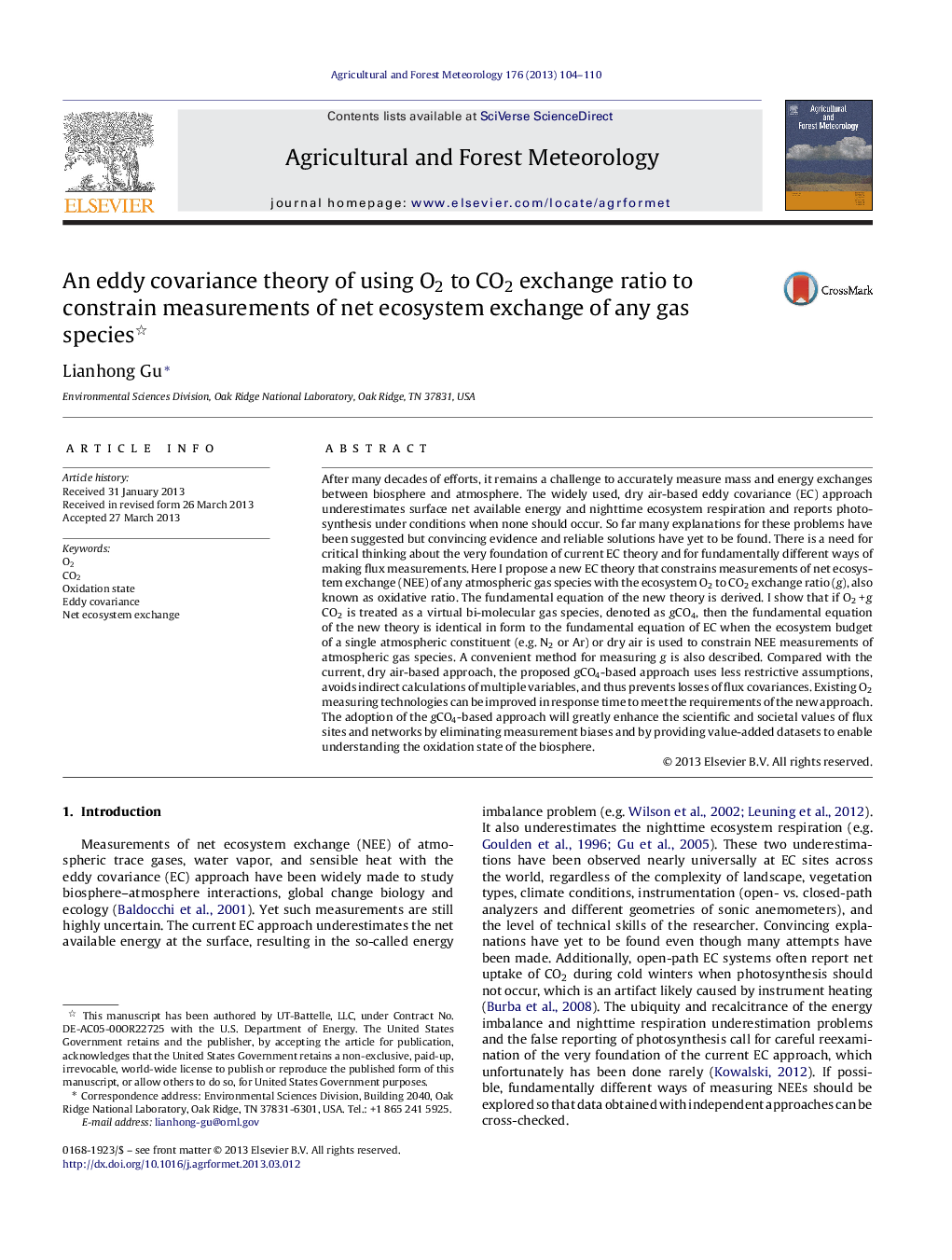| کد مقاله | کد نشریه | سال انتشار | مقاله انگلیسی | نسخه تمام متن |
|---|---|---|---|---|
| 81812 | 158352 | 2013 | 7 صفحه PDF | دانلود رایگان |

• A new eddy covariance theory is proposed.
• The new theory is based on ecosystem O2 to CO2 exchange ratio.
• The fundamental equation of eddy covariance for the new theory is derived.
• The advantages of the new theory over the current theory are discussed.
• Ways to testing the new theory are suggested.
After many decades of efforts, it remains a challenge to accurately measure mass and energy exchanges between biosphere and atmosphere. The widely used, dry air-based eddy covariance (EC) approach underestimates surface net available energy and nighttime ecosystem respiration and reports photosynthesis under conditions when none should occur. So far many explanations for these problems have been suggested but convincing evidence and reliable solutions have yet to be found. There is a need for critical thinking about the very foundation of current EC theory and for fundamentally different ways of making flux measurements. Here I propose a new EC theory that constrains measurements of net ecosystem exchange (NEE) of any atmospheric gas species with the ecosystem O2 to CO2 exchange ratio (g), also known as oxidative ratio. The fundamental equation of the new theory is derived. I show that if O2 + g CO2 is treated as a virtual bi-molecular gas species, denoted as gCO4, then the fundamental equation of the new theory is identical in form to the fundamental equation of EC when the ecosystem budget of a single atmospheric constituent (e.g. N2 or Ar) or dry air is used to constrain NEE measurements of atmospheric gas species. A convenient method for measuring g is also described. Compared with the current, dry air-based approach, the proposed gCO4-based approach uses less restrictive assumptions, avoids indirect calculations of multiple variables, and thus prevents losses of flux covariances. Existing O2 measuring technologies can be improved in response time to meet the requirements of the new approach. The adoption of the gCO4-based approach will greatly enhance the scientific and societal values of flux sites and networks by eliminating measurement biases and by providing value-added datasets to enable understanding the oxidation state of the biosphere.
Journal: Agricultural and Forest Meteorology - Volume 176, 15 July 2013, Pages 104–110